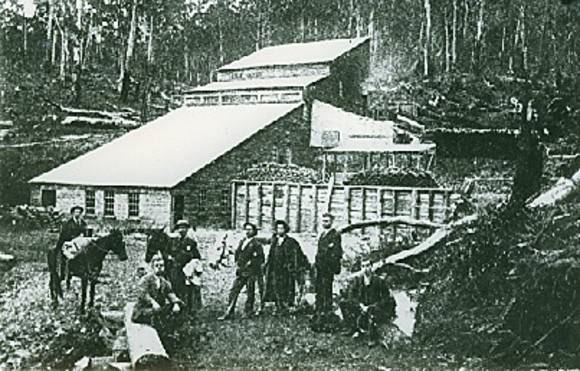| Back to search results » | Back to search page » |
|
United Brothers Battery Site
LocationGLEN VALLEY VIC 3898 - Property No B5280
File NumberB5280LevelLocal |
|
Statement of Significance
Statement of Significance: At the time of its erection (late 1894/early 1895) the installation was regarded as a model gold processing plant. It was only the second plant in Victoria to use the newly imported Luhrig vanners for the treatment of heavily mineralised ore and its operation was described several times in the Australian Mining Standard. After the original company ceased operations in 1904 the plant was taken over by local miners and became the centre of a four year struggle to ensure the survival of the community in this remote and rather harsh corner of the state. The site is also of interest because its location was the result of a set of decisions that made the plant unworkable. It was neither close enough to the mine to ensure an adequate supply of stone in winter (when the tramway froze and was buried in snow) but where there was insufficient water, nor near enough to a plentiful supply of water throughout the year, to reach which would have entailed an extensive haulage system.
History: Gold was discovered in an exposed quartz reef on what became known as United Creek by a syndicate of four prospectors. A 30-acre lease (no.1862) one mile north of Cooper Bros. store was applied for on 27 March 1893 and the reef was worked both north and south from the creek on two drives at No. 1 level until April 1894 when the property was sold to a Melbourne company. A 20 head Austral Otis battery and concentrating plant were bought in September 1894, site work commenced the following month and the battery was completed and in operation by June 1895. It was an impressive sight, particularly at night when it was lit by electric lamps supplied from its own generating plant. The battery was then almost continually in operation until about 1902. During this time some 30,000 tons of stone were crushed for an official return of about 20,000 ounces; although local sources suggest a figure closer to 50,000 ounces.
The property was sold to a local syndicate in November 1904 and thereafter began a desperate struggle to pump out the shaft and to ensure the survival of the nearby mining community at Sunnyside.
The attempt failed despite several reconstructions of the company and the use of several kinds of pumping machinery. All the machinery was confiscated and disposed of by 1914. Parts of the battery itself have been found at other sites in the area.
Condition: Except for six foundation bolts the battery site is now completely devoid of machinery. Although there has been some regrowth and some disturbance due to the laying of telephone cables across the site at battery level, all the features are clearly visible and it would not require much effort to interpret it for the hardier travellers who use that section of the Omeo Highway or the Alpine Walking Track nearby.
Classified: 23/11/1982
Group
Military
Category
Battery




